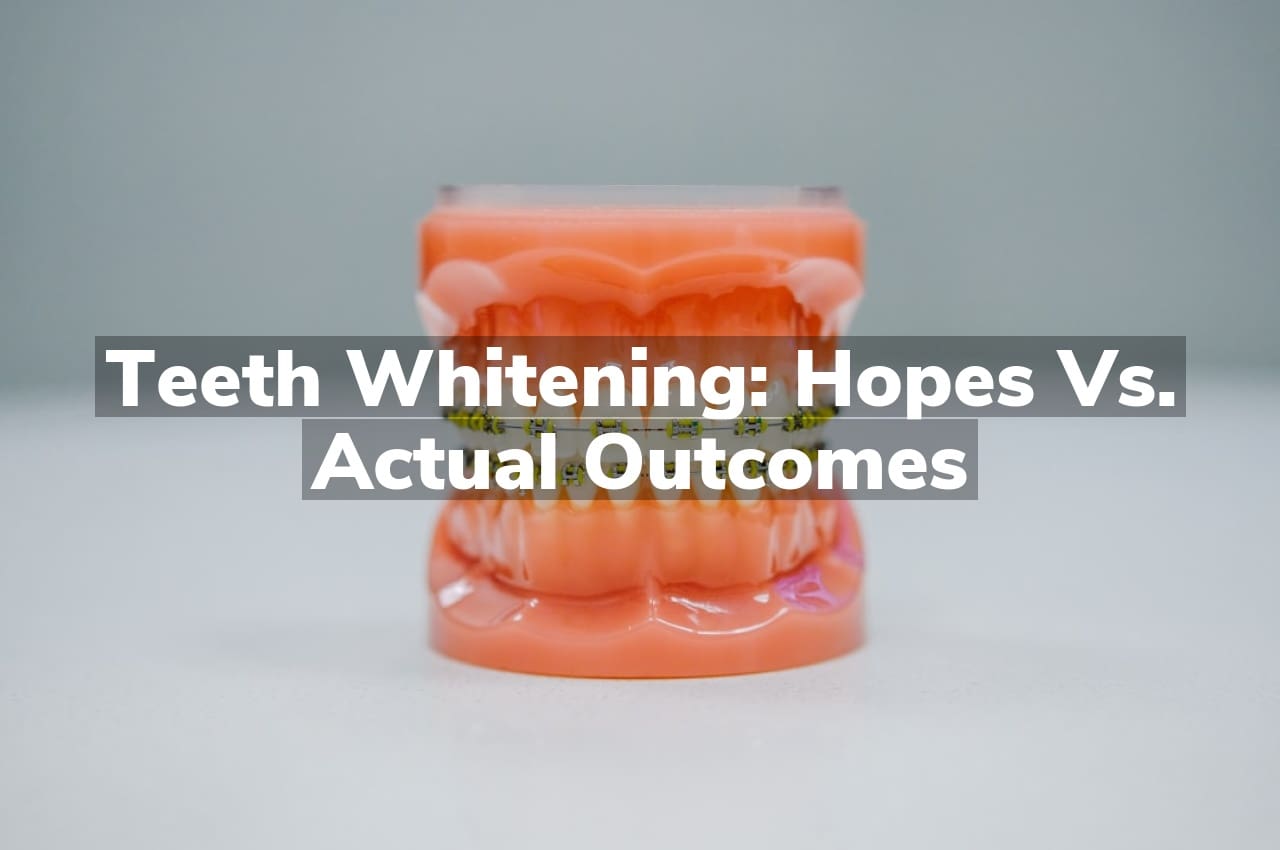Have you ever wondered if the dazzling smiles promised by teeth whitening actually match real-life results? While many hope for a sparkling transformation, the actual outcomes can vary widely, depending on individual circumstances and the methods used. It’s a journey of expectations meeting reality, with each experience being uniquely personal.
Expectations of Teeth Whitening Results
When considering teeth whitening, many individuals harbor high expectations, often influenced by media portrayals and societal beauty standards. The anticipation generally revolves around achieving a significantly brighter and more uniform smile, which, in turn, is believed to enhance one’s overall appearance and boost self-confidence. This desire for an idealized outcome has roots that trace back through the ages, a fascinating journey detailed in the Historical Evolution of Dental Whitening Practices. Understanding this context can provide insight into why modern expectations are so high.
However, the actual outcomes of teeth whitening can vary widely among individuals. Factors such as the natural color of one’s teeth, lifestyle habits (like diet and smoking), and the underlying cause of discoloration play significant roles in the effectiveness of whitening treatments. While many achieve satisfactory results, it’s crucial to have realistic expectations and understand that not everyone will attain the stark white smile often depicted in advertisements. This discrepancy between hopes and actual outcomes underscores the importance of professional consultation to set achievable goals for teeth whitening endeavors.
Common Misconceptions About Whitening Effects
When it comes to teeth whitening, many individuals harbor unrealistic expectations, primarily due to widespread misconceptions. One common belief is that teeth whitening can achieve a permanent, stark white result for everyone. However, the reality is that the effectiveness of whitening treatments varies significantly among individuals, depending on factors such as the natural color of their teeth, their dental health, and their lifestyle habits. Another prevalent myth is that teeth whitening is a one-time procedure with lasting effects. In truth, maintaining the results of teeth whitening often requires follow-up treatments and a commitment to oral hygiene.
Moreover, some people assume that teeth whitening can correct all types of discoloration, including intrinsic stains that occur from within the tooth. Unfortunately, not all discoloration issues can be addressed through whitening treatments alone. It’s essential for individuals to have realistic expectations and understand that teeth whitening may not be a viable solution for every type of dental discoloration. For those considering teeth whitening, consulting with a professional can provide clarity and guidance tailored to their specific needs. If you’re looking for expert advice in New Haven, consider exploring New Haven’s Choice for Teeth Whitening for more information.
Reality of Whitening Duration
When considering teeth whitening, it’s essential to have realistic expectations about the duration of the results. Many individuals enter the process hoping for permanent or long-lasting outcomes, but the reality is that the effects of teeth whitening are not indefinite. The duration of whiteness can vary significantly based on a variety of factors, including dietary habits, oral hygiene practices, and natural tooth color. Understanding that teeth whitening results are temporary and may require maintenance over time is crucial for setting realistic expectations and achieving satisfaction with the whitening process.
Sensitivity Issues Post-Whitening
Many individuals embark on teeth whitening journeys with high hopes for a brighter smile, but it’s crucial to have realistic expectations about the outcomes, especially concerning sensitivity issues post-whitening. A common aftermath of teeth whitening procedures is an increased sensitivity in the teeth. This sensitivity can vary from mild to intense and may last for a short period or extend over a longer duration, depending on the individual’s dental health and the method of whitening used. Understanding that sensitivity is a potential outcome can help manage expectations and prepare for the post-whitening period. For those seeking professional advice on managing sensitivity or exploring teeth whitening options, New Haven Dental Center Family & Cosmetic Dentistry is a resource worth considering.
Impact on Daily Consumption Habits
The journey towards achieving a brighter smile through teeth whitening often brings to light the significant impact our daily consumption habits have on the results. Beverages and foods that are known for their strong colorants can affect the longevity and effectiveness of teeth whitening outcomes. As individuals embark on this cosmetic enhancement, there’s a natural curiosity about how their favorite daily consumables might play a role in maintaining their desired results. This awareness about the interaction between teeth whitening and consumption habits underscores the importance of understanding the broader implications of our dietary choices on cosmetic dental procedures.
Conclusion
For more insights, read reviews on Google Maps or call us at 260-748-3696 to discuss further.
